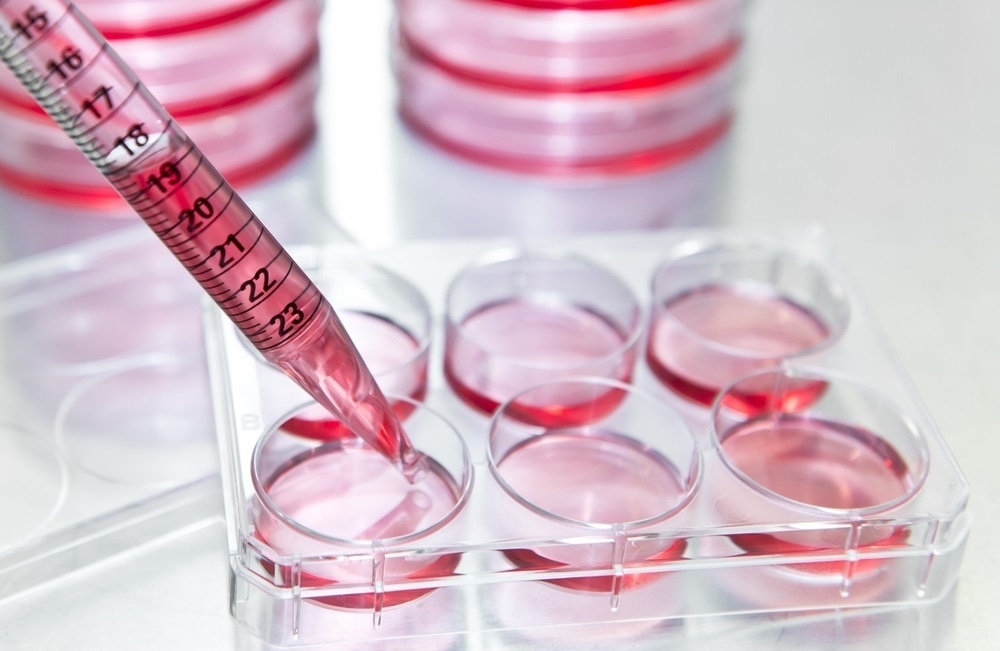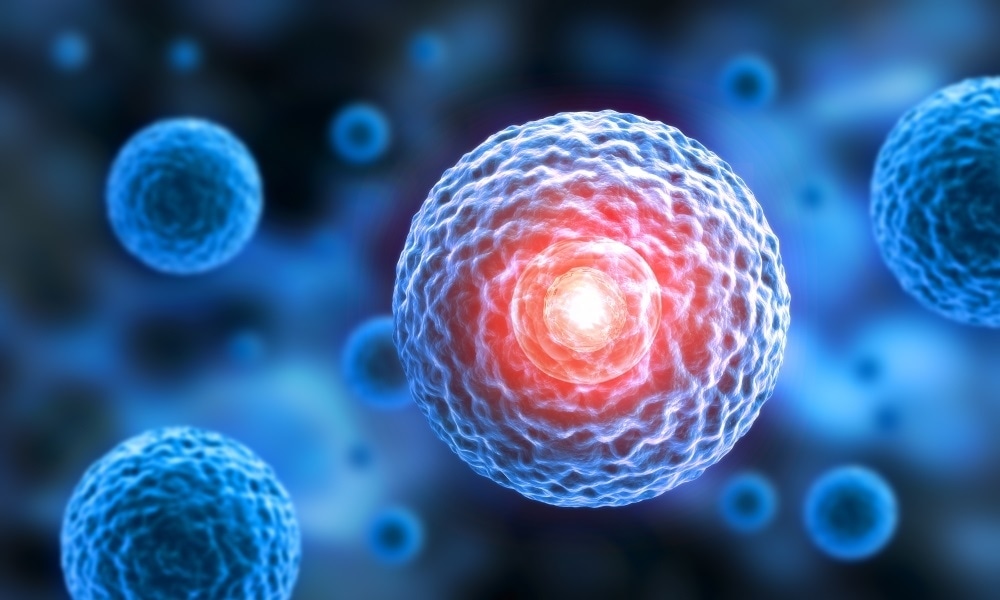This interview features wide-ranging insight from a number of Thermo Fisher Scientific experts in this area: Krzysztof Inglot –Technical Sales Specialist for Single-Use Technology in Central Eastern Europe and the Middle East regions; Femi Egbebi – Senior Global Product Manager for Cell Culture Media; and Daniel Merriman - Product Manager for Process Analyzers.
The experts outline a number of techniques, tools, and approaches to improve and optimize cell culture processes, including the innovative use of multi-omics, the implementation of process analytical techniques, and real-time process monitoring.
Could you give our readers a brief overview of Thermo Fisher Scientific’s solutions for process monitoring and how these meet current market demands?
Krzysztof Inglot: Market demands are constantly shifting and evolving, meaning that any products introduced into the market should be done rapidly and efficiently, making production times as short as possible.
The traditional manual data entry and management approach does not meet the current market’s demands, not least because data within the whole workflow process should be traceable and of the highest quality in line with high consumer, regulatory and market demands.
In order to optimize a process, it is necessary to have direct access to the data at each process step. This data is key to optimizing each individual step.
Facilities are now highly individualized, meaning that approaches to optimization must be tailored to each process. We have observed that customers are using unique devices with highly engineered PLC-based solutions, generating a lot of ‘automatization islands’ where data integrity is not as well maintained as it should be.
The Thermo Fisher Scientific solution to these problems is centered around our controllers. These controllers can be easily connected to virtually any other device, piece of equipment or sensor – at either research or production scales. We use the same software package across all platforms, maintaining consistent data flow between R&D, clinical trials and the production site.
The heart of the system is our DeltaV controller. We are able to connect this controller to a range of upstream devices, such as bioreactors and pumps from a variety of manufacturers. The controller can also connect to instrumentation used for downstream processing, for example, chromatography skid tools, sterile filtration, ultrafiltration or mixers.

Image Credit: Shutterstock/unol
How are these devices connected to and integrated with the controller?
Krzysztof Inglot: Every device is connected to a single network and controlled via software. We offer a range of control computers with our software installed, each designed to accommodate different applications and sizes of networks.
Our basic platform - the Professional Plus Station – is able to control the whole process from one platform, while the Application Station can be used to store and process data on a separate device.
We also offer specific control systems which allow users to access each bioreactor or instrument locally or remotely throughout the whole process.
Our TruBioTM software has been specifically designed for bioprocess solutions. It is FDA 21 CFR part 11 compliant and validated according to GMP. Despite being an off-the-shelf product, we are able to modify and adjust the software to accommodate most process requirements.
TruBio features predefined, standard control strategies for controlling pH, DO, temperature, weight and dosing options. The software also offers the unique ability to save the whole process configuration, send this to another location and upload the file to a new system. The entire process - including procedures and setup - will then be recognized at the other location.
TruBio can be used to control a wide range of equipment, sensors, pumps and vessels from different vendors - even up to production scale where a single use vessel may be up to 5,000 liters in volume. All of these components can be interfaced using appropriate communication standards, including Modbus, Profibus, TFF or traditional input/output methods.
TruBio offers a number of useful configuration options and tools, including signal adjustment via mathematical equations, calculation blocks, comparison functions and timers. These tools allow each device to be controlled or monitored according to a certain equation or function, effectively allowing us to automate the process and make it more efficient.
The software’s graphics and control loops will adjust automatically to match the type of vessel currently in use, with all procedures defined for each vessel type available to use via a single interface.
TrueBio can also be integrated with a range of manufacturing execution systems (MES) and enterprise management systems. These overarching systems are responsible for the planning, logistical and financial analysis of the whole process.
The software can also export reports suitable for a number of different platforms, making it easier to integrate with these wider systems. TruBio can generate and publish reports in a wide range of formats, including PDF and Excel files, or data can be made available via the software’s web portal for instant access.
Looking at the wider field, what are some of the main challenges associated with bioprocessing?
Femi Egbebi: Bioprocessing is complex with many variables to consider; for example, the cell line, media feeds and process conditions, such as temperature and pH, which need to be controlled. Achieving specific process goals of can feel like a puzzle that needs to be solved in order to arrive at the optimal combination of productivity and product quality.
Media and feed are huge parts of this puzzle because each contains hundreds of components.
How can media analysis help to simplify this process and make this puzzle easier to solve?
Femi Egbebi: There has historically been quite a bit of guesswork involved in designing the best formulation for a specific process because the solution space is huge and complex, and the spent media analysis methods that we typically use provide limited information. This is because spent media analysis measures extracellular components that have been utilized (or not utilized) in the media or secreted into the media.
One way to make the media design process better is to have a thorough understanding of the metabolic pathways involved during the cell culture process by combining both intracellular and extracellular information. This is where metabolomics and proteomics (which we collectively call multi-omics) offer great potential to improve the design of cell culture medium feeds.
I will briefly introduce how multi-omics works; there are different levels of participants in system biology – including the genome, epigenome, transcriptome, proteome, and metabolome. Each of these layers provides a different level of information about a cell culture process. The application of both proteomics and metabolomics lets us take the guesswork out of media design, moving us from an untargeted process to a targeted process.
Leveraging multi-omics data very early on during the media design process allows us to narrow down the most relevant nutrition-influencing components and therefore reduce the number of steps necessary to achieve the desired results.
This process leads to higher performing formulations while potentially reducing the media development timeline as the developers will need to perform fewer DOE iterations to reach a result.

Image Credit: Shutterstock/peterschreiber.media
What are the typical steps and considerations when applying multi-omics data to media design processes?
Femi Egbebi: A few basic steps are involved when applying multi-omics datasets for media design, optimization and development.
Our goal is to first establish a metabolic baseline. We do this by running the cell line of interest in a growth performance assay (GPA) against a panel of formulations. The diversity of the media environment is key to being able to characterize the cell culture process. We can learn a lot about a process by evaluating a range of responses; for example, media conditions and environments that yield low titer versus high titer or low viability versus high viability. This will enable us to determine the pathways that are activated in each of these cases.
This feature makes multi-omics different from the traditional approach, which looks to optimize each step in the process.
Over the course of the GPA, we collect samples at different time points and analyze these using the mass spectrometers to identify thousands of proteins and metabolites. This is followed by statistical analysis and the use of software tools to identify the relevant pathways and determine which of those pathways are limiting.
The final step involves designing the DOE around the nutrients that are influencing the pathways that we consider relevant to our process goals.
What sort of instrumentation is typically used for small molecule analysis and how does this fit with the multi-omics workflow?
Femi Egbebi: We generally use mass spectrometry instrumentation for small molecule analysis. Our team utilizes an Orbitrap ID-X Tribid MS system which allows us to precisely and accurately identify up to 1,000 metabolites and Orbitrap FusionTM LumosTM TribidTM system when working with light molecules and proteins. Our team has optimized these systems so we can rapidly and accurately identify and quantify proteins with very high reproducibility, including lower abundance proteins that are very difficult to detect.
How important is real-time monitoring of cell cultures and fermentation, and how can this be achieved?
Daniel Merriman: Real-time monitoring of fermentation and cell culture is vitally important, and we principally do this via gas analysis mass spectrometry. The ability to monitor this in real-time relies on the proper integration of process analytical technology (PAT) into pharma processes.
The FDA has previously summarized the implementation of PAT and is starting to require it more and more. The FDA views PAT as vital in the shift from testing according to documents that utilizie on-line, out-line and in-line techniques to monitor process parameters that impact quality.
This is essentially about building quality into a process rather than checking the output of the process for its quality.
Improvements and benefits from proper implementation of PAT include minimizing the risk of poor processes and process failures while potentially reducing development cycle times in bioprocesses.

Image Credit:Shutterstock/luckystep
How is a PAT system typically implemented into a process?
Daniel Merriman: Implementation of PAT is a multi-stage process. There are critical quality attributes associated with a process, and that is as true of pharma processes as it is of others.
The first stage is focused on designing the PAT solution and understanding which process parameters would impact those quality attributes.
Having analyzed those quality attributes, the second stage sees us implement systems to monitor those process parameters in order to achieve good outcomes.
The next stage of the implementation looks to control these process parameters based on the understanding gained in order to improve processes and ensure consistent performance and, ultimately, high product quality.
Can you provide an example of this process in a real-world setting?
Daniel Merriman: We can consider this process by looking at an example implementation of a gas analysis mass spectrometer as a PAT tool in a fermenting bioreactor. This example is common in lab environments and a range of other processes, with many similarities, whether this is at benchtop scale or full-scale production.
In this example, the critical process parameters (CPPs) may include gases being measured, such as oxygen or carbon dioxide, as well as values that are calculated from those measurements. For example, respiratory quotients (RQ) - the function of the consumption of oxygen and the evolution of CO2.
By monitoring the gas phase of input and output to a fermenter, calculating critical process parameters such as RQ, and reading those process parameters using a control system, it is possible to achieve changes in the process to maintain the highest level of performance.
In the example I mentioned, the total cell count in the process rose throughout the hundred hours or so of the batch. However, a study showed that at about 70 hours, the rate of viability fell considerably.
Essentially while the total number of cells continued to increase, cells were dying and viability was falling. This was ultimately due to glutamine depletion.
By studying the process, it was also noted that the oxygen uptake rate fell dramatically at around 70 hours into the process — knowledge of this in real-time enabled changes to the process to avoid a failed batch.
Similar PAT implementations have been found to support the optimization of microbial and bacterial fermentation processes, growth of mammalian cell cultures, food ingredients and agricultural products, and even biofuels.
Where can our readers find out more about the optimizing cell culture and media applications and the support that Thermo Fisher Scientific can offer in this area?
Daniel Merriman: I would encourage readers to look at the resources on the Thermo Fisher Scientific website as a starting point. For example, the site’s PAT page includes application notes relating to the use of gas analysis mass spectrometry as a PAT tool and also includes peer-reviewed papers by researchers from the University College London and NIBRT on the use of gas analysis mass spectrometry in mammalian cell culture.
About Thermo Fisher Scientific – Environmental and Process Monitoring Instruments
 We design and manufacture industry-leading products for Gas & particulate pollutants, Flow, gas and liquid measurement, Process analytical measurements, and Industrial Hygiene.
We design and manufacture industry-leading products for Gas & particulate pollutants, Flow, gas and liquid measurement, Process analytical measurements, and Industrial Hygiene.
Technologies have proven to help customers improve efficiency, ensure process and quality control, maintain regulatory compliance, and increase worker safety.
Process mass spectrometers
Maximize product yield and increase profitability with process mass spectrometry analysis. Process gas analyzers are engineered to meet a number of challenging process applications in the petrochemical, iron, and steel, and biotechnology industries. Highly reliable and easy-to-own, Thermo Fisher Scientific process gas analysis technologies deliver faster, more complete, lab-quality online gas analysis and process analytics. Learn More
Process analytical technology/Biotech
Process Analytical Technology (PAT) is a regulatory framework initiated by the United States’ Food and Drug Administration (FDA) that encourages pharmaceutical manufacturers to improve the process of pharmaceutical development, manufacturing, and quality control.
PAT aims to improve process efficiency by defining Critical Process Parameters (CPP) and monitoring these CPPs to stay within a defined limit, either in-line or on-line to maintain a product’s Critical Quality Attributes (CQA). Monitoring CPPs with process mass spectrometry gas analysis reduces over-processing, pinpoints contaminants, and increase product consistency. Learn More
Industrial hygiene
Industrial hygiene instruments keep your investments secure, your facilities compliant with local regulations, and your workers safe from leaking pollutants, gases, or toxic vapors. Make sure you have the most updated technology, with access to repair and calibration support to maintain reliable gas monitoring. With our environmental expertise, you can breathe easy knowing your company, workers, and neighboring communities have cleaner, safer, and healthier air quality. Learn More
Sulfur analyzers
Online sulfur analyzers replace expensive and time-consuming laboratory sampling. Get fast responses and wide measurement ranges of trace sulfur and total sulfur in flare gas, liquid, and vapor for reliable emissions monitoring. Learn More
Gas & particulate analyzers
Increasingly stringent regulatory requirements are making it more difficult to maintain regulatory compliance and optimal process performance. Air quality monitoring and reporting requirements in the U.S., China, India, Europe, and Latin America are shifting and being redefined. Together we can arrive at solutions that make sound business sense. Learn More
Flow measurement
Flow measurement and process control are critical aspects of producing, handling, and transporting hydrocarbons around the world. With our Thermo Scientific suite of flow computers and flow meters, we enable our customers to reduce cost, decrease lost material, automate, and monitor critical points in processes. From field to control room and upstream to downstream, our products provide greater control, confidence, and reliability. Learn More